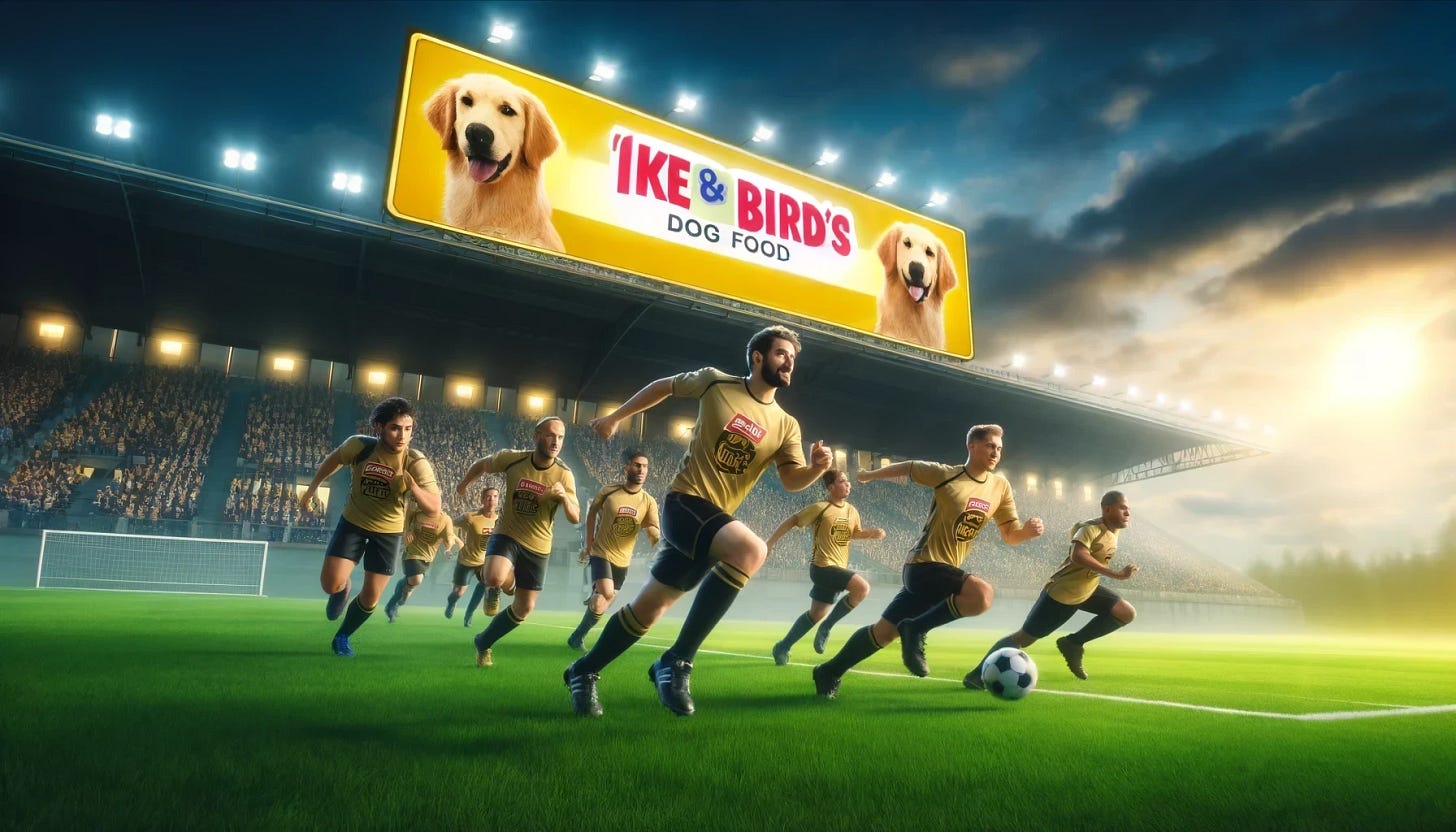Winning Tandems: Intro to Sports Partnerships
Starting off with a strong framework for building categories for mutually beneficial partnerships
We’re back this week!
So…you’re looking for a brand partner. Or, you’re at a company looking for a property to partner with for the next several years. What’s important?
Sports partnerships provide a unique opportunity for businesses to build relationships with potential customers and partners. These partnerships can provide a number of benefits, including increased brand awareness, customer loyalty, and sales. However, measuring the success of these partnerships can be challenging due to a number of factors, including the complexity of the partnerships themselves and the lack of standardized metrics across measurement partners, especially with B2B. We will start with a light introduction on how to align on mutually beneficial partnerships. We’ll do this through the case of Ike & Bird’s Dog Food.
Aligning on mutually beneficial partnership categories
One of the first aspects of a partnership is alignment on the shared goals and values being sought. As deals are constructed, it’s also key to consider where your brand or potential partner might sit in terms of sophistication. For those brands new to sports deals, whether a legacy or emerging brand, they are likely to outsource their deal strategy to help them interpret and broker an appropriate contract level. As the owner of Ike & Bird’s Dog Food, we are new to the space and an emerging brand, looking to box out our competitors in the category across the state of Texas.
In addition, as a seller or brand considers their categorical alignment (most organizations carve up their assets into categories), they should leverage external resources to identify emerging trends and categories to target not just at the time, but also in the future. One great resource is CBInsights, which has market maps such as the one below to understand those subcategories as well as potential partners / competitors. As the owner of my dog food brand, I’m not necessarily worried about the AI top 100, but I should be thinking about the future of the pet food industry when I sign my deal, especially if long term.
Where is pet food going?
How many new buyers do I project out of this partnership?
What assets am I receiving? Do they make sense for my target audience?
When will I pull insights?
On the organization side, the seller should think about:
What other categories of pet food could be sold and how to price the total category vs. slices of the category? For example, Ike & Bird’s Dog Food could own the entire pet food category for a higher contract amount than the dry dog food category.
Is this something my fans will find affinity with? Are they ‘dog people’?
How long you’d like to have the category locked out and what the build should be?
What are the emerging trends and where is the dog food category going?
Too many times, we can find our sales team in a rigid place when it comes to categories. The industry is changing too fast to miss out on opportunities to generate more revenue, but also to ensure a fair partnership.
In general, here are a few ways to think about mutually beneficial partnerships:
Strategic Alignment: Strategically align partnerships with their brand values, business goals, and target audience. This alignment helps in reinforcing the brand's messaging and reaching the right demographics.
Long-term Commitment: Approach sports partnerships with a long-term perspective, investing in sustained growth rather than short-term gains. This commitment often leads to deeper relationships with sports entities and more meaningful engagement with fans.
Innovation: Leverage the latest technologies and innovative practices to enhance their partnerships. This could include digital marketing strategies, fan engagement technologies, and advanced analytics to measure the impact of their sponsorships.
Integrated Marketing: Mature brands effectively integrate their sports partnerships into broader marketing campaigns. This includes leveraging various channels and tactics such as events, social media, content marketing, and public relations to amplify their reach.
Flexibility and Adaptability: The ability to adapt to changes and be flexible with partnership strategies is crucial, especially in dynamic environments like sports. Mature brands are adept at adjusting their tactics based on evolving market conditions and partnership results. And remember, less is more.
Here’s a photo of the real Ike and Birdie - we are taking deliveries of free dog food.
Bringing back the library!
We’ll keep it short this week, but I’m bringing back a few highlights from my recent reads/listens.
I really enjoyed The Formula: How Rogues, Geniuses, and Speed Freaks Reengineered F1 into the World’s Fastest Growing Sport. This book was a light read to dig a bit deeper into the history of Formula 1. The authors’ other book, The Club, is one of my favorite books recently.
I’ve also spent a lot of time recently watching and following Sloane Stephens, and she is incredible. Her new podcast, Sincerely, Sloane, presented by UNINTERRUPTED was released yesterday. Check out the first episode with journalist Taylor Rooks!
Thank you all for reading!








